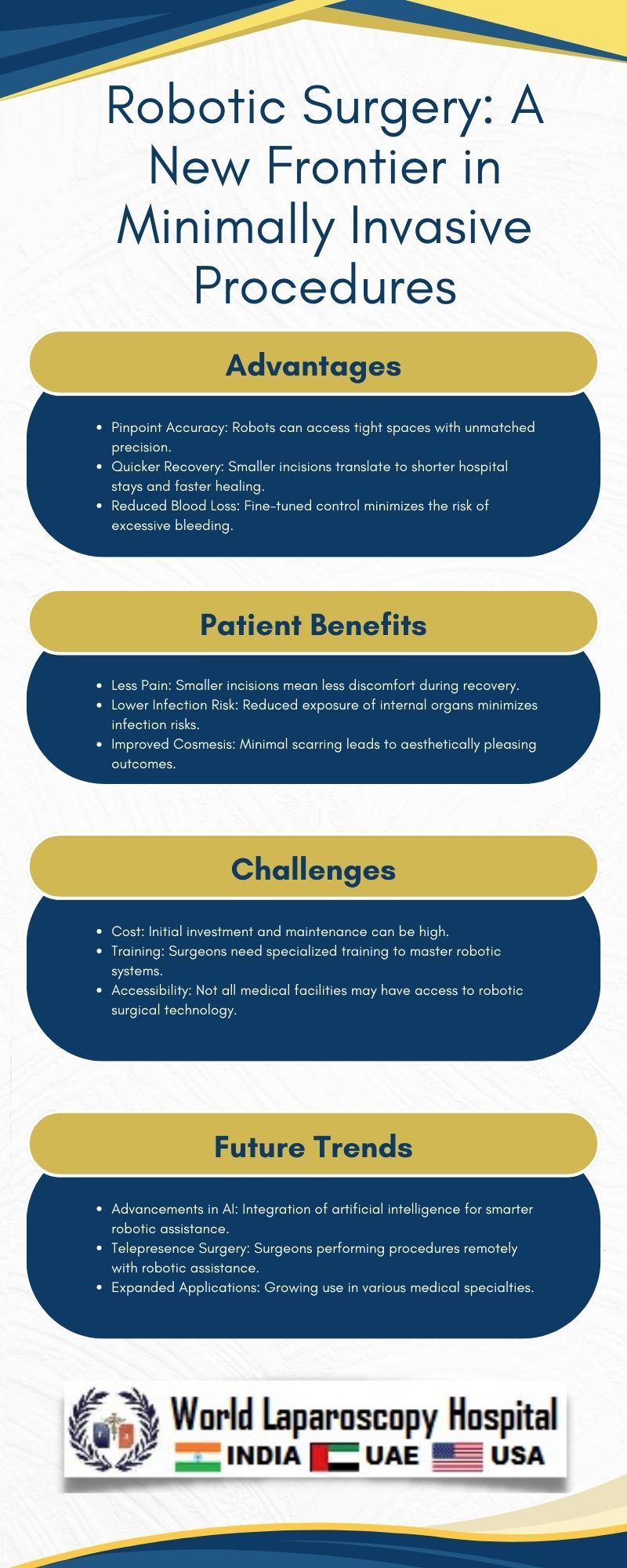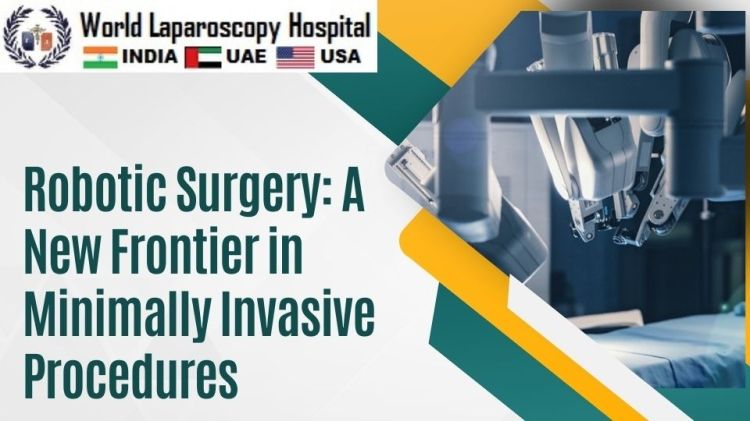Robotic Surgery: A New Frontier in Minimally Invasive Procedures
Introduction
In recent years, the field of surgery has witnessed a transformative shift with the advent of robotic technology. Robotic surgery, a novel approach to minimally invasive procedures, has emerged as a groundbreaking frontier in medical science. This article explores the evolution, applications, advantages, and challenges of robotic surgery, shedding light on its profound impact on the healthcare landscape.

Evolution of Robotic Surgery
Genesis of Robotic Surgery
The roots of robotic surgery can be traced back to the early 1980s when the first robotic system, PUMA 560, was used for neurosurgical biopsies. However, it was not until the 21st century that robotic surgery gained significant traction, with the introduction of the da Vinci Surgical System.
The Da Vinci Surgical System
Developed by Intuitive Surgical, the da Vinci Surgical System became a game-changer in the world of surgery. Launched in 1999, this robotic platform allowed surgeons to control robotic arms with greater precision, enabling minimally invasive procedures across various medical specialties.
Applications of Robotic Surgery
General Surgery
Robotic surgery has found wide-ranging applications in general surgery. Procedures such as cholecystectomy, colectomy, and hernia repair are now performed with the assistance of robotic systems. The enhanced dexterity and three-dimensional visualization offered by these systems contribute to improved outcomes and reduced recovery times.
Gynecology
In gynecological surgeries, robotic systems have revolutionized the approach to hysterectomy, myomectomy, and other complex procedures. The minimally invasive nature of robotic surgery minimizes scarring, lowers the risk of infection, and accelerates patient recovery, making it an attractive option for gynecologists.
Urology
Urological surgeries, including prostatectomy and nephrectomy, have benefited immensely from robotic assistance. The precision of robotic instruments allows surgeons to navigate intricate anatomical structures with greater accuracy, reducing the likelihood of complications and improving patient outcomes.
Cardiothoracic Surgery
Robotic surgery has made significant inroads in cardiothoracic procedures, enabling surgeons to perform complex heart surgeries with minimal trauma. Coronary artery bypass grafting and mitral valve repairs are now conducted using robotic systems, offering patients a less invasive alternative to traditional open-heart surgery.
Advantages of Robotic Surgery
Enhanced Precision
One of the primary advantages of robotic surgery is the level of precision it provides. The robotic arms can mimic the movements of the surgeon's hands with a high degree of accuracy, allowing for delicate and intricate procedures that might be challenging with traditional surgical methods.
Minimally Invasive Nature
Robotic surgery is inherently minimally invasive, involving small incisions through which robotic instruments are inserted. This results in reduced blood loss, lower risk of infection, and quicker recovery times for patients compared to open surgery.
3D Visualization
The three-dimensional visualization offered by robotic systems enhances the surgeon's depth perception and spatial awareness. This improved visual clarity contributes to more accurate and efficient surgeries, particularly in complex procedures where precise anatomical navigation is crucial.
Reduced Scarring
The smaller incisions used in robotic surgery result in minimal scarring for patients. This cosmetic advantage is not only aesthetically appealing but also contributes to a psychological benefit for individuals undergoing surgery, potentially reducing postoperative stress and discomfort.
Quicker Recovery
Patients undergoing robotic surgery often experience shorter hospital stays and faster recovery times compared to traditional surgical approaches. The reduced trauma to surrounding tissues and organs facilitates a speedier return to normal activities, improving overall patient satisfaction.
Challenges and Considerations
Cost
One significant challenge associated with robotic surgery is the high initial cost of acquiring and maintaining robotic systems. The expenses related to training surgeons and support staff further contribute to the overall cost, raising questions about the economic feasibility of widespread adoption.
Learning Curve
While robotic systems offer advanced capabilities, mastering the technology requires extensive training. Surgeons must navigate a learning curve to become proficient in operating robotic platforms, potentially slowing down the integration of robotic surgery into mainstream medical practice.
Limited Haptic Feedback
One drawback of robotic surgery is the limited haptic feedback experienced by surgeons. Unlike traditional surgery, where tactile sensations guide the surgeon, robotic systems provide only visual and auditory feedback. This absence of tactile information could potentially impact the surgeon's ability to assess tissue characteristics accurately.
Dependency on Technology
Robotic surgery introduces a dependency on technology that raises concerns about system malfunctions, software glitches, or technical failures during a procedure. Surgeons and healthcare institutions must have contingency plans in place to address such challenges and ensure patient safety.
Future Directions and Innovations
Artificial Intelligence Integration
The integration of artificial intelligence (AI) into robotic surgery holds promise for further enhancing precision and decision-making. AI algorithms can analyze vast amounts of patient data, assist in real-time decision support, and contribute to personalized surgical approaches.
Telesurgery
Advancements in communication technology may pave the way for telesurgery, allowing surgeons to perform robotic procedures remotely. This could bridge the gap between healthcare providers and patients in remote or underserved areas, expanding access to specialized surgical expertise.
Miniaturization of Robotic Instruments
Ongoing efforts to miniaturize robotic instruments aim to reduce the invasiveness of robotic surgery even further. Smaller robotic tools could enable surgeons to perform procedures with even tinier incisions, potentially unlocking new possibilities in various medical specialties.
Conclusion
Robotic surgery represents a revolutionary frontier in the realm of minimally invasive procedures, fundamentally altering the landscape of modern medicine. Its applications span across multiple specialties, offering enhanced precision, shorter recovery times, and reduced scarring. Despite challenges such as cost and the learning curve, ongoing innovations, including AI integration and miniaturization, hold the promise of further improving the efficacy and accessibility of robotic surgery. As technology continues to evolve, the synergy between human skill and robotic assistance is poised to shape the future of surgical practice, ushering in an era of unprecedented possibilities for patient care and medical advancements.





